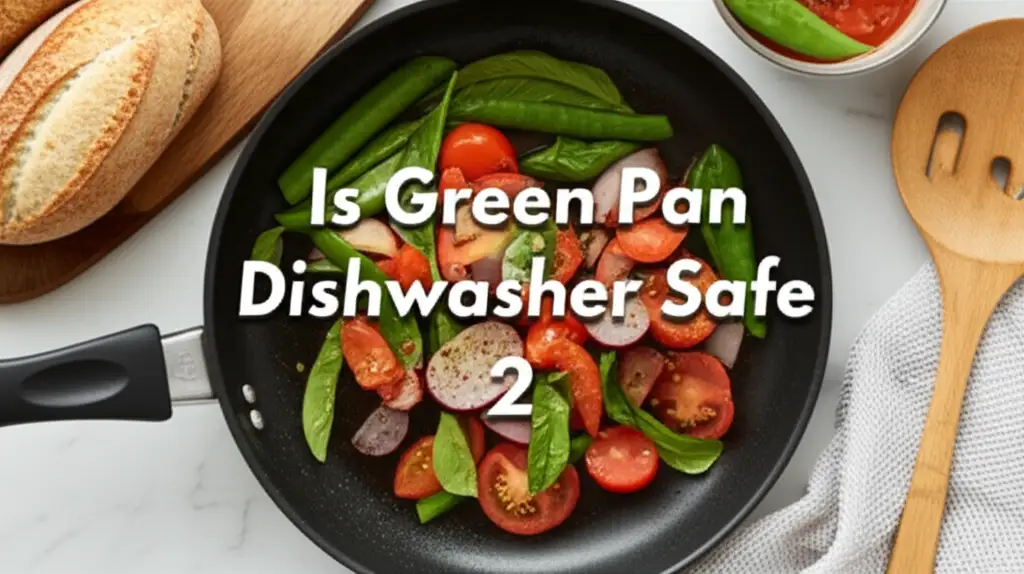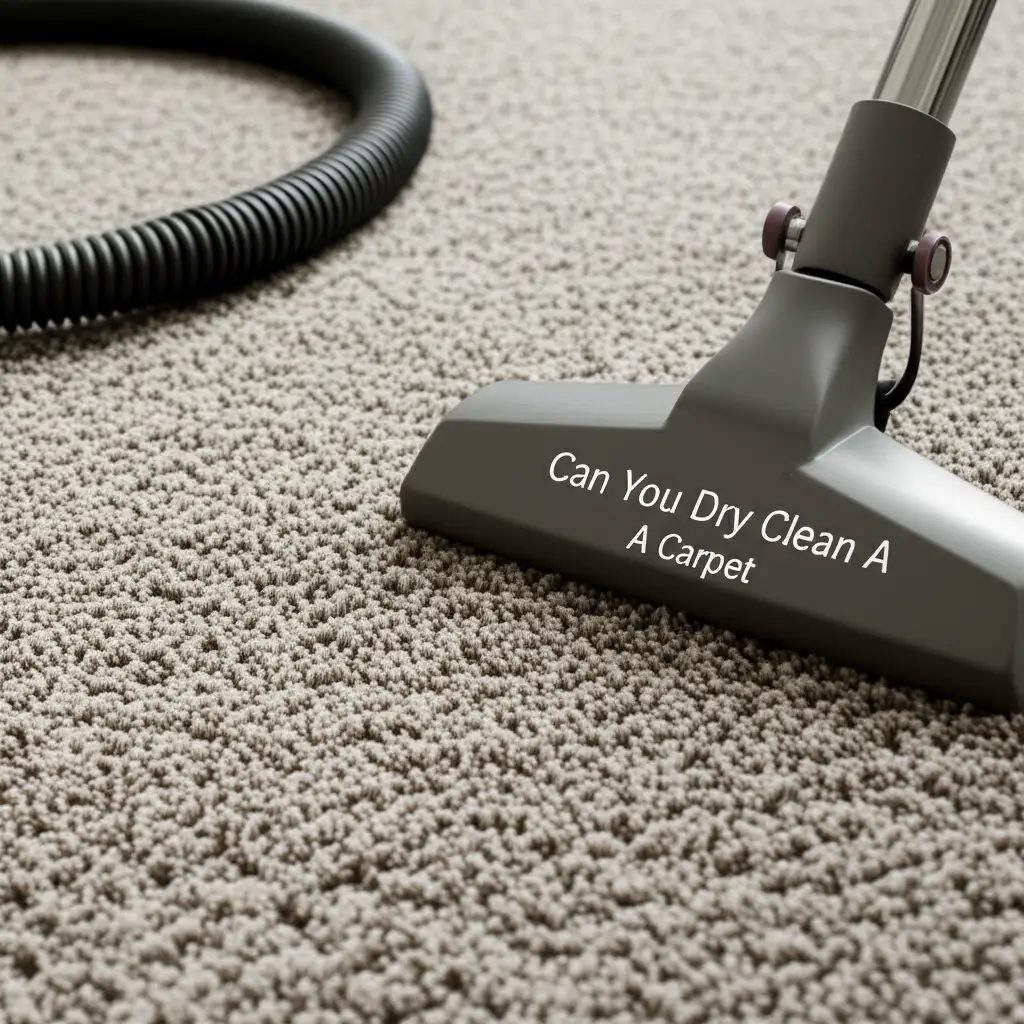· Mason Everett · Kitchenware Care · 17 min read
Is Green Pan Dishwasher Safe 2

Is Green Pan Dishwasher Safe? A Deep Dive into Care
Bringing home new cookware is exciting. You might wonder about the best ways to keep it in top condition. One common question I hear is, “Is Green Pan dishwasher safe?” The convenience of tossing pots and pans into the dishwasher is appealing. However, the truth about maintaining high-quality non-stick cookware like Green Pan is more nuanced.
Green Pan is known for its Thermolon ceramic non-stick coating. This coating offers a wonderful cooking experience. It is important to know how to properly clean it. This article explores Green Pan’s dishwasher safety claims. We will look at why hand washing is often better. I will share tips for cleaning your Green Pan cookware. This information helps you protect your investment. You can keep your pans performing well for years.
Takeaway: Your Green Pan Care Guide
- Hand Washing is Best: For maximum longevity and performance, always hand wash your Green Pan cookware.
- Avoid Harsh Detergents: Dishwasher detergents contain abrasive chemicals. These chemicals harm non-stick coatings.
- Gentle Cycles (If Necessary): If you must use a dishwasher, choose a gentle or eco-friendly cycle.
- Lower Rack Avoidance: Place pans on the top rack if possible. Prevent contact with other items.
- Air Dry Preferred: High heat drying cycles damage coatings. Let your pans air dry.
- Soft Tools Only: Use soft sponges or cloths for cleaning. Never use abrasive scrubbers.
The Short Answer: Is Green Pan Dishwasher Safe?
While many Green Pan products are labeled “dishwasher safe,” Green Pan itself strongly recommends hand washing. Dishwashers can shorten the lifespan of the non-stick coating due to harsh detergents, high heat, and potential knocks from other items. Hand washing ensures your cookware remains in prime condition, preserving its non-stick properties and overall durability.
Understanding Green Pan’s Non-Stick Technology and Dishwasher Claims
Green Pan stands out in the cookware market. Its commitment to non-toxic, ceramic non-stick coatings attracts many home cooks. My own kitchen often sees a Green Pan in use. People choose Green Pan for its health benefits and ease of use. Understanding their technology helps us care for it properly.
The Thermolon Ceramic Coating Explained
Green Pan cookware features Thermolon ceramic non-stick coating. This is a special type of coating. It does not contain harmful chemicals like PFAS, PFOA, lead, or cadmium. This makes it a safer choice for many families. The ceramic surface is very smooth. Food slides off easily, making cooking and cleaning simple.
Thermolon coating is applied using a sol-gel process. This process creates a durable non-stick layer. It is designed to withstand high temperatures. However, “high temperatures” in cooking are different from temperatures inside a dishwasher. Dishwashers combine intense heat with strong chemical detergents. These factors can stress the ceramic coating. Over time, this stress degrades the non-stick properties. It can also make the surface less effective.
”Dishwasher Safe” vs. “Dishwasher Recommended”: A Key Difference
You might see “dishwasher safe” printed on your Green Pan packaging. This label means the item should withstand the dishwasher without immediate damage. It does not mean the dishwasher is the best method for cleaning. Think of it like this: your car is “road safe” but driving through potholes every day will still cause damage. Similarly, a pan might survive a dishwasher cycle. Regular exposure to harsh conditions shortens its overall life.
I find that many cookware brands use “dishwasher safe” as a marketing term. It highlights convenience. However, they often include care instructions that advise hand washing. Green Pan is no good exception. Their own care guides often suggest hand washing for best results. This distinction is crucial for understanding how to truly protect your investment. For other types of cookware, you might ask, is The Rock dishwasher safe? or are Tasty Pans dishwasher safe?. The answers often share similar nuances.
Manufacturer’s Stance and Warranty Implications
Green Pan provides clear care instructions with their products. They emphasize that while their products can go into the dishwasher, hand washing helps maintain the non-stick coating. They often state that high heat and harsh detergents can damage the non-stick surface over time. This damage might not be covered under warranty.
I always recommend reading the specific care instructions for your Green Pan model. Different collections might have slightly different recommendations. For instance, some lines may be more robust than others. Following the manufacturer’s preferred cleaning method protects your warranty. It also ensures you get the longest possible life from your cookware. Ignoring these recommendations can lead to premature wear. You might find your once-slippery pan starts to stick.
The Hidden Dangers: Why Dishwashers Threaten Your Green Pan’s Longevity
It is tempting to throw everything into the dishwasher. It saves time and effort. However, this convenience comes at a cost for non-stick cookware. Dishwashers create a harsh environment. This environment breaks down the special coating on your Green Pan. I have seen many good pans ruined by repeated machine washing.
Harsh Detergents: The Silent Enemy
Dishwasher detergents are very powerful. They contain strong chemicals, enzymes, and abrasive agents. These ingredients are designed to strip away grease and baked-on food. They work well on dishes made of glass or ceramic, which are non-porous and durable. However, they are too aggressive for delicate non-stick coatings.
When these harsh chemicals come into contact with your Green Pan’s ceramic surface, they slowly erode it. This erosion is not always visible after one wash. It happens gradually with each cycle. The non-stick properties diminish. Food starts to stick. The pan becomes difficult to clean. This is the main reason I advise against regular dishwasher use for my non-stick pans. You might also wonder if something is safe if it’s “BPA-free”; remember that does BPA-free mean dishwasher safe? The answer is often no, as materials react differently to dishwasher conditions.
Extreme Heat and Water Pressure: A Recipe for Ruin
Dishwashers use very hot water and powerful jets. The high temperatures, especially during the drying cycle, are bad for non-stick coatings. Extreme heat causes the coating to expand and contract. Over time, this stress leads to tiny cracks or lifting of the coating. This compromises the non-stick performance.
The strong jets of water also contribute to wear. They can blast away at the coating. Combined with abrasive detergent particles, this creates a sandblasting effect. The water pressure can also cause damage to other items. This includes delicate parts or certain plastics. Even seemingly durable kitchen items like some small appliances might not handle it well; for example, people often ask can I put Nutribullet in dishwasher?. The general rule is: if it has a special coating or delicate parts, hand washing is usually safer.
Physical Abrasion and Knocking: Beyond Chemical Damage
Inside a dishwasher, items often shift and clank together. Your Green Pan might knock against other dishes, silverware, or even the dishwasher racks themselves. This physical abrasion causes scratches and dents. These small damages break the ceramic coating. Once the coating is compromised, the non-stick properties are gone.
I have seen scratches on the inside of pans from just one dishwasher cycle. The non-stick surface is quite resilient to normal cooking use. However, it is vulnerable to sharp edges or rough surfaces. Even if the coating remains intact, the exterior finish can suffer. Green Pan often uses durable exterior coatings. Yet, repeated knocking can chip or dull them. Hand washing avoids these physical impacts. It keeps your pans looking new for longer. For understanding other reasons items might not be dishwasher safe, consider why certain insulated containers, like Why are RTIC cups not dishwasher safe?, are also hand-wash only. It often comes down to preserving specialized coatings or seals.
Mastering Hand Washing: The Ultimate Care for Your Green Pan
Hand washing your Green Pan is the best way to ensure its longevity. It protects the delicate non-stick coating from harsh conditions. I always choose hand washing for my own Green Pan collection. It takes a little more effort. However, it truly extends the life and performance of the pan.
The Gentle Approach: Tools and Techniques
When you hand wash your Green Pan, gentle is the key. Use warm, soapy water. A soft sponge or a microfiber cloth works best. Avoid anything abrasive. This includes steel wool, rough scrubbing pads, or brushes with stiff bristles. These tools scratch the non-stick surface. Once scratched, the non-stick property is lost in that area.
I start by letting the pan cool down completely. Then, I add a small amount of mild dish soap to the pan. I fill it with warm water. I let it sit for a few minutes if food is stuck. This loosens any residue. Then, I gently wipe the surface clean. Rinse thoroughly with warm water. This method ensures the pan gets clean without any damage.
Cooling Down: A Crucial First Step
Always let your Green Pan cool down before washing it. Taking a hot pan directly from the stovetop and plunging it into cold water can cause thermal shock. Thermal shock leads to warping. It can also cause tiny cracks in the non-stick coating. This damage might not be visible at first. However, it compromises the pan’s structure and performance over time.
I make it a habit to let my pans sit on the stove or a cooling rack for a few minutes after cooking. This allows the pan to reach room temperature safely. Once cool, it is ready for washing. This simple step protects your pan from unnecessary stress. It keeps the base flat and the coating intact.
Tackling Stubborn Residue Safely
Sometimes, food sticks despite your best efforts. Do not reach for harsh scrubbers. For stubborn residue, fill the pan with warm water. Add a tiny amount of dish soap. Let it soak for 10-15 minutes. The warm water helps to loosen the stuck-on bits. After soaking, most residue wipes away easily with a soft sponge.
If something is still stubborn, you can gently rub with a silicone scraper. Some people find baking soda and water paste effective. Mix a small amount of baking soda with water to form a paste. Gently apply it to the problem area. Let it sit for a few minutes. Then, gently scrub with a soft sponge. Rinse well afterward. This method is effective without harming the non-stick coating. Remember to clean your dishwasher filter regularly too, as a dirty filter can affect how well your machine cleans dishes, including any cookware you might choose to put in there. You can learn more about how often should you clean your dishwasher filter?.
Navigating Dishwasher Use: When Convenience Calls (and How to Mitigate Risk)
Even with the best intentions, sometimes the dishwasher just calls to you. Maybe you have a busy night. Perhaps you just want the ease. If you absolutely must use a dishwasher for your Green Pan, there are ways to minimize the risk. It is not ideal, but you can take steps to protect your pan as much as possible.
Selecting the Right Cycle: Gentle is Gold
Modern dishwashers offer various cycles. If you place your Green Pan in the machine, choose the gentlest option. Look for “Eco,” “Light Wash,” or “Delicate” cycles. These cycles use lower temperatures. They also use less water pressure. This reduces the stress on your pan’s coating and handles.
Avoid “Heavy Duty,” “Sanitize,” or “Power Wash” cycles. These are too intense for non-stick cookware. The extended exposure to high heat and strong jets accelerates wear. I always remind people that even a gentle cycle is a compromise. Hand washing remains the top choice for pan longevity. This advice extends to other kitchen appliances too. For example, when considering if is my air fryer dishwasher safe? similar considerations about cycles and heat apply.
Loading Your Green Pan Smartly
How you load your dishwasher also affects your Green Pan. Place the pan on the top rack. This keeps it away from the most intense heat sources. It also helps prevent physical contact with other dishes. Make sure the pan is not touching other items. Other items, especially metal utensils or sharp ceramic plates, can scratch the non-stick surface during the wash cycle.
Position the pan to allow water and detergent to reach all surfaces. Avoid nesting pans or stacking items on top of it. This ensures effective cleaning. It also reduces the risk of scratches. After the wash cycle, open the dishwasher door. Let the pan air dry. The heated drying cycle is very bad for non-stick coatings. The prolonged high heat can cause damage.
Detergent Choices: What to Use and What to Avoid
Your choice of dishwasher detergent matters greatly. Opt for mild, liquid, or gel detergents. Avoid powder or tablet detergents. These often contain highly concentrated abrasive agents. These agents are designed to scrub aggressively. They are too harsh for the delicate ceramic coating on your Green Pan.
Look for detergents labeled “eco-friendly” or “gentle.” These often have fewer harsh chemicals. Never use abrasive cleaners or scouring powders on your Green Pan, inside or out. I also recommend checking your dishwasher’s detergent dispenser. Sometimes, residual detergent can be very strong. Understanding things like where to put vinegar in dishwasher to clean or what to do if you put regular dish soap in, as in what to do if you put Dawn in dishwasher, highlights how specific cleaning agents interact with machine washing.
Drying: Air Dry for Best Results
After the wash cycle, always choose to air dry your Green Pan. The heated drying cycle in a dishwasher is a major culprit for damaging non-stick coatings. The prolonged exposure to high, dry heat can cause the coating to degrade. It can also lead to discoloration or a chalky appearance over time.
I simply open my dishwasher door. I pull the rack out. I let the pan air dry naturally. This method prevents heat damage. It also helps maintain the pan’s pristine finish. If you are in a hurry, you can gently dry the pan with a soft microfiber cloth. This protects the non-stick surface. It also prevents water spots.
Preserving Performance: Long-Term Maintenance for Your Non-Stick Investment
Beyond washing, other practices help maintain your Green Pan’s performance. Thinking about how you store and use your cookware is important. These small steps ensure your non-stick investment lasts for many years. I have found these habits make a big difference in my own kitchen.
Proper Storage: Preventing Scratches and Dents
How you store your Green Pan is as important as how you clean it. Stacking pans directly on top of each other causes scratches. The weight of other pans, combined with any movement, can damage the non-stick surface. This damage ruins the pan’s effectiveness.
I recommend using pan protectors. These are soft felt or silicone pads. Place them between pans when stacking. Alternatively, hang your pans on a pot rack. This keeps them separate and prevents contact. If space is limited, nest pans with a protector between each. This simple practice guards against scratches. It helps maintain the pan’s smooth non-stick surface.
Utensil Choices: Protecting the Surface from Day One
The type of utensils you use directly impacts your Green Pan’s coating. Always use silicone, wood, or heat-resistant plastic utensils. Metal utensils can scratch, chip, or gouge the ceramic non-stick surface. Even a small scratch can compromise the integrity of the coating. Once the coating is damaged, food starts to stick in that spot.
I keep a separate set of non-metal utensils for my non-stick pans. This ensures I never accidentally use a metal spoon or spatula. Be mindful when stirring or flipping food. Avoid any aggressive scraping actions. Gentle use preserves the non-stick layer. It ensures uniform cooking performance.
Low to Medium Heat Cooking: Maximizing Coating Life
Green Pan’s Thermolon coating is designed for excellent heat distribution. This means you rarely need to use high heat settings. Cooking on low to medium heat settings extends the life of your non-stick coating. High heat can cause the coating to break down faster. It also makes food more likely to stick.
Always preheat your pan gradually. This allows the heat to distribute evenly. Use a small amount of oil or butter. This helps with cooking. It also protects the non-stick surface. Avoid cooking sprays. Cooking sprays can leave a sticky residue that builds up. This residue is difficult to remove. It also harms the non-stick properties over time. Stick to liquid oils or butter for best results.
Debunking Myths: Common Misconceptions About Non-Stick Cookware and Dishwashers
Many myths circulate about non-stick cookware and dishwasher use. These ideas often come from old information or general assumptions. I want to clear up some common misunderstandings. Knowing the facts helps you make better choices for your Green Pan.
”BPA-Free Means Dishwasher Safe”: A False Equation
A common misconception is that if a product is “BPA-free,” it is automatically safe for the dishwasher. This is not true. BPA (Bisphenol A) relates to plastics. It concerns health and chemical leaching. Dishwasher safety, on the other hand, relates to material durability under high heat, water pressure, and harsh detergents.
A BPA-free plastic item might still warp, crack, or degrade in a dishwasher. The heat can deform it. The chemicals can cause discoloration. Just because something is free from one harmful chemical does not mean it is impervious to machine washing. Always check specific care instructions. Do not rely on a single label for all safety concerns. For instance, knowing that does BPA-free mean dishwasher safe? is a separate question highlights this.
”Just a Quick Cycle Won’t Hurt”: Understanding Cumulative Damage
Some people believe that an occasional “quick cycle” in the dishwasher will not harm their non-stick pan. This is also a myth. While one cycle might not show immediate, catastrophic damage, the effects are cumulative. Each exposure to high heat and harsh chemicals adds to the wear and tear.
Think of it like sun exposure. One day in the sun might not cause a sunburn. However, repeated exposure without protection leads to skin damage over time. The same applies to your Green Pan. Each “quick cycle” chips away at the integrity of the non-stick coating. Eventually, these small damages add up. They lead to a pan that sticks. I always advise against any dishwasher use for non-stick.
”My Pans Are Cheap, So Who Cares?”: The Value of Proper Care
Another common thought is that if a non-stick pan is inexpensive, its care does not matter as much. This is a mistake. Even affordable non-stick pans benefit greatly from proper hand washing. Treating them well extends their useful life. It saves you money in the long run. You avoid frequent replacements.
Furthermore, a sticking pan, regardless of its original cost, is frustrating to use. It makes cooking less enjoyable. Food burns more easily. Cleaning becomes a chore. Proper care ensures even a budget-friendly non-stick pan performs well for its intended lifespan. It is always worth protecting your cooking tools. This applies across the board, whether it’s a value-brand pan or premium cookware like Green Pan. It’s about respecting your tools and making them last.
FAQ Section
Can I put all Green Pan collections in the dishwasher?
While many Green Pan collections are labeled “dishwasher safe,” Green Pan itself advises hand washing for all its non-stick cookware. This recommendation applies across their product lines. Hand washing helps to maintain the unique Thermolon ceramic coating and extends the pan’s overall lifespan, regardless of the specific collection you own.
What are the signs of dishwasher damage on Green Pan?
Signs of dishwasher damage include a sticky or rough feeling on the non-stick surface, food sticking more often, discoloration of the coating, or warping of the pan’s base. The handles might also loosen or show signs of fading. These issues result from harsh detergents, high heat, and physical impacts inside the machine.
How do I remove stubborn food from my Green Pan without scratching it?
For stubborn food, let your Green Pan cool completely. Fill the pan with warm water and a small amount of mild dish soap. Let it soak for 10-15 minutes. Most residue will then wipe away easily with a soft sponge or cloth. For very tough spots, a baking soda paste can be gently applied





